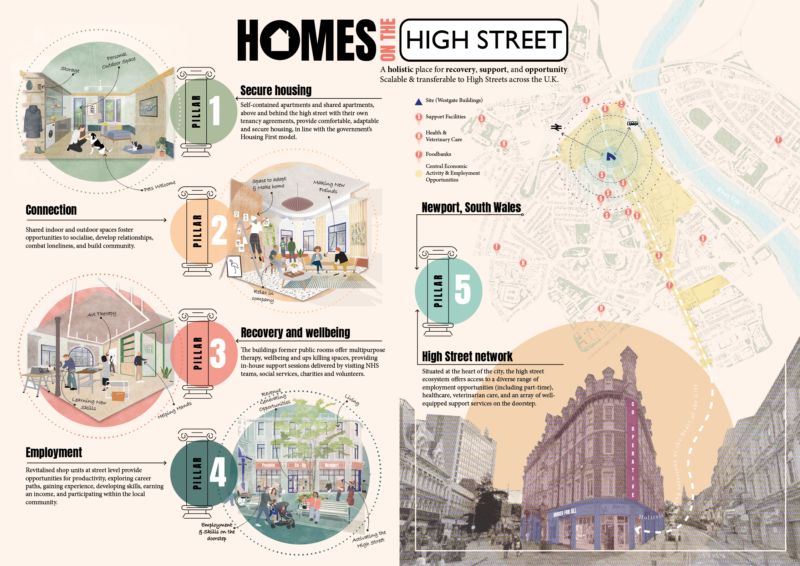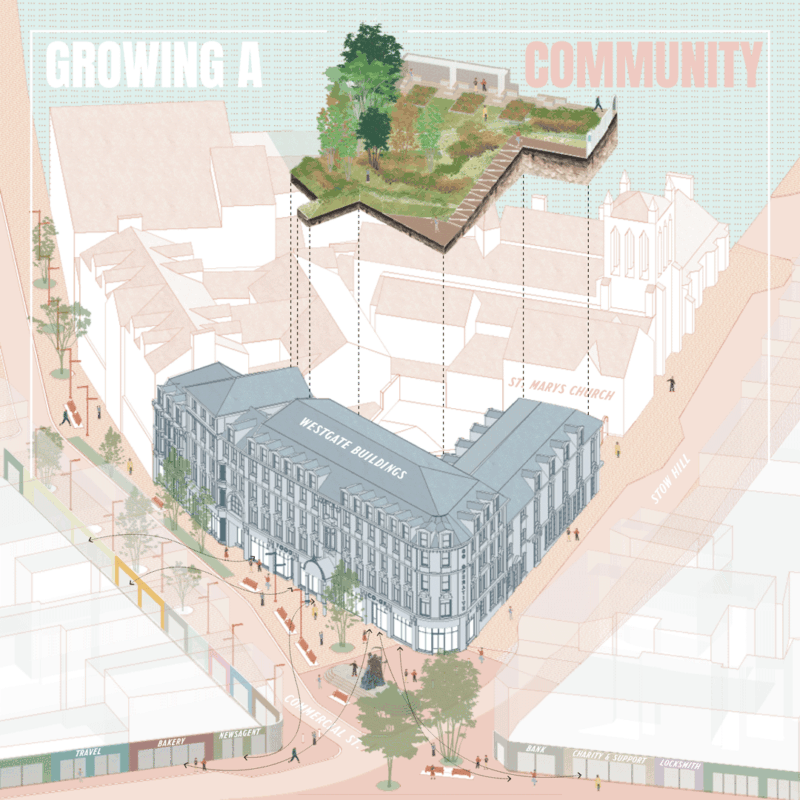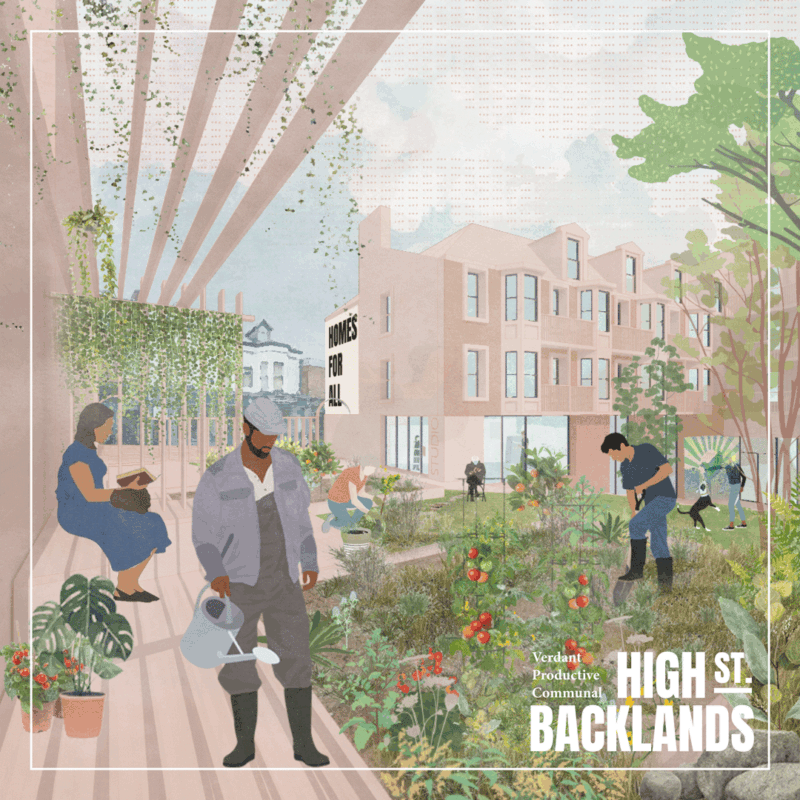
Homes on the High Street
Duty to Care
A holistic high street place for recovery, support and opportunity – scalable across the UK
People who find themselves homeless can slip through the gap. The impact of becoming homeless on care leavers, ex-offenders, ex-soldiers, divorcees and refugees can initiate a progressive decay of social exclusion – compromising access to employment, healthcare and financial aid ¬especially for those with limited support from family and friends.
With a Nurse Practitioner team member with specialist experience of providing care for the homeless through the Aneurin Bevan University Health Board, the proposal identifies that many victims of homelessness suffer from trauma, mental health difficulties and chronic loneliness, which can be episodic and progress into addiction. Dependable housing and a helping hand are needed to turn things around.
Homes on the High Street’s study area is in Newport, Wales. As elsewhere in the UK, homelessness is very visible on the high street but digging deeper reveals an intricate ecosystem of social services, healthcare facilities, community infrastructure, businesses, shops, eateries, homes and transport hubs in proximity. The high street is therefore an ideal location to ensure maximum accessibility to support streams for homeless people.
A backdrop to Chartist protest in 1839, the Westgate Building at the heart of Newport’s high street has lain abandoned for the past 20 years. The proposal combines a considered retrofit to reinvigorate a prominent building as secure housing with a link-up to established high street networks. Working holistically to halt the progressive decay of homelessness, the solution would enable residents to continue living in familiar surroundings, with access to support, social networks and employment either in-house or within walking distance.
Joseph Williams, Urban Designer
Pamela Snow, Architect
Abigail Ward, Nurse Practitioner and Community
Aivaras Gedvilas, Creative Media and Video Production

